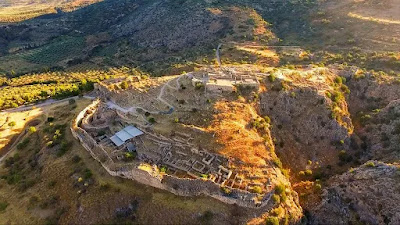The following article was obtained through Christianity.com and written by Candice Lucey.
Part 2
Why Do We Celebrate Christmas on December 25th?
The day and month of Jesus’s birth are even more challenging to establish. Theologians typically agree that December 25 is far from likely. In the late Roman Empire, there was a festival called "Sol Invictus" (the Unconquered Sun) that celebrated the sun god on December 25th. Some have suggested that the choice of this date for Christmas was influenced by the desire to Christianize or replace this pagan holiday - conceived as an effort to establish a pagan substitute for a date that already held a degree of importance for Roman Christians.
Another argument takes a different view. December 25th falls close to the winter solstice in the Northern Hemisphere, which is the shortest day and longest night of the year. In many pagan traditions, the winter solstice was a significant event associated with the rebirth of the sun and the return of longer days. Some festivals, like the Roman festival of Saturnalia, were celebrated around this time, often involving feasting and gift-giving. Saturnalia, in particular, is often cited as a possible influence on the dating of Christmas. Saturnalia was a Roman festival that celebrated the god Saturn and included various festivities, including gift exchanges and feasting. Some argue that the early Christians chose December 25th to celebrate Jesus' birth to co-opt or replace Saturnalia with a Christian holiday.
When Roman Emperor Constantine converted to Christianity, it was easier for the newly formed church to repurpose the pagan observance of the winter solstice between December 17-25 since citizens were already prepared to celebrate the day. Thus, a celebration and festival filled with family and friends exchanging gifts meant these traditions would continue as Christmas.
Another intriguing theory proposes that December 25 was officially designated as Christmas Day by Sextus Julius Africanus in AD 221. This assertion is rooted in meticulous calculations that Africanus undertook, embarking on a historical journey that began with his estimation of the world's creation in 5499 BC. With an unwavering dedication to precision, Africanus meticulously traced the lineage of biblical figures and significant events, meticulously aligning them with historical and astronomical data. His goal was to pinpoint the most appropriate date for commemorating the birth of Jesus Christ, a task that required an intricate web of chronology and celestial observations. Africanus's determination to find this date led him to December 25, marking it as the momentous day when Christians should celebrate the birth of their savior. His extensive calculations and scholarly dedication have left an enduring legacy, contributing to the rich tapestry of theories surrounding the birth date of Jesus Christ.
Evidence in the Bible
As mentioned above regarding the month Jesus was born, realistically, shepherds would not have been tending their flocks in December when the weather was cold; they would have continued shepherding no later than October.
Bible scholars also try to time Jesus’s birth by timing the birth of his cousin John according to the sparse information about Zechariah, Elizabeth, and Mary outlined in Luke. Elizabeth was six months pregnant when Mary arrived, and Mary left three months later. According to BibleInfo.com:
“We can approximate the month of Jesus’ birth to be around the time of Tishri (mid to late September). To arrive at this date, start at the conception of John the Baptist, Sivan (June), count forward six months to arrive at Gabriel’s announcement of the conception of Jesus, Kislev (December), then count forward nine more months, the time it takes for human gestation, to reach Tishri (September), when Jesus was born.”
This is assuming each mother’s pregnancy went full-term. Other accounts take details about Zechariah’s temple duties to arrive at a spring birth for Christ. There is no definitive answer. One must seek the opinions of the most trusted scholars in this matter.
Dating Based on King Herod
Dating the birth of Jesus around the death of King Herod is a historical puzzle that involves a combination of biblical and extra-biblical sources, along with some scholarly interpretations. Here's how it's typically done:
- Biblical Accounts: The primary source for dating Jesus's birth in relation to King Herod comes from the New Testament, specifically the Gospel of Matthew. In Matthew 2:1, it mentions that Jesus was born during the time of King Herod. It also describes Herod's attempt to have Jesus killed by ordering the massacre of infants in Bethlehem, commonly known as the "Massacre of the Innocents."
- Herod's Reign: King Herod the Great is a well-documented historical figure. His reign is generally believed to have started around 37 or 36 BC. Historical records also indicate that he died around 4 BC, which is a crucial reference point.
- Astronomical Data: Some scholars have suggested that the "Star of Bethlehem," which guided the Magi to the birthplace of Jesus, might have been a celestial event. Astronomical calculations and computer simulations have been used to try to identify potential astronomical occurrences around the time of Jesus's birth. Some theories suggest conjunctions of planets or other celestial phenomena around 6-4 BC.
- Luke's Gospel: While the Gospel of Luke doesn't mention King Herod, it provides additional clues for dating Jesus's birth. Luke 2:2 mentions a census ordered by Caesar Augustus. Historically, such censuses were conducted periodically, and there is evidence of one occurring in 6-4 BC.
- Scholarly Consensus: Taking into account all the available evidence, many scholars place Jesus's birth between 6 and 4 BC, with the death of King Herod serving as a significant anchor point. This allows for the events described in the biblical narratives to align with the historical context of Herod's reign and the Roman census.
What Does the Bible Tell Us About Jesus' Birth?
Celebrating the birth of Jesus on Christmas holds profound significance in Christian tradition, even in light of His life, death, and resurrection. Jesus' birth marks the fulfillment of numerous Old Testament prophecies, underscoring Jesus's identity as the promised Messiah. This celebration reaffirms the belief that God's plan of salvation foretold in the Scriptures, came to fruition through Jesus.
Christmas is the beginning of Jesus's earthly life, leading to His sacrificial death on the cross and subsequent resurrection. Christians view Jesus's birth as the initial step in God's redemptive plan, offering forgiveness of sins and eternal life through faith. Christmas is a source of joy and hope, signifying that God entered the world to bring light into darkness and offer hope to those in need.
In summary, Christmas, the celebration of Jesus's birth, remains a deeply meaningful and cherished observance in Christianity. It not only acknowledges the historical and theological significance of His birth but also reminds believers of the foundational events that paved the way for His life, death, and resurrection. It is a celebration of God's love for humanity, the hope and salvation brought by Jesus, and a time to share these profound truths with the world.
Does it Matter When Jesus Was Born?
Even if the global Christian community could clearly decide that Christ was born on a different day, changing the date of Christmas worldwide would pose many problems. Selecting a new date for celebrating Christ’s birth would require massive adjustments at both commercial and institutional levels.
- School calendars and public holidays have been established to coincide with this time.
- The economies of developed nations rely on the financial boost provided during the Christmas season.
- Churches organize special events around this time.
- Families use this date as a reason to get together.
It is beneficial to fix a date for Christmas Day, even if it seems arbitrary. In an age where “our fast-moving lives have wreaked havoc on our relationships,” as Rick Warren said, and we feel disconnected from one another, celebrating Jesus’ birth unifies the church body both locally and at large.
Moreover, Christmas celebrations provide an opportunity to engage community members who might not otherwise attend church events. The day is set apart even in the hearts and minds of non-believers. Associating Christmas with light-hearted festivities might seem disrespectful in light of its true meaning. Still, the joy of singing familiar carols and lighting candles, the sense of belonging and love connected to the holiday, encourages many unbelievers to attend Christmas services where they might hear the gospel.
Sources:
.jpg)
.jpg)
















.jpg)

.jpg)